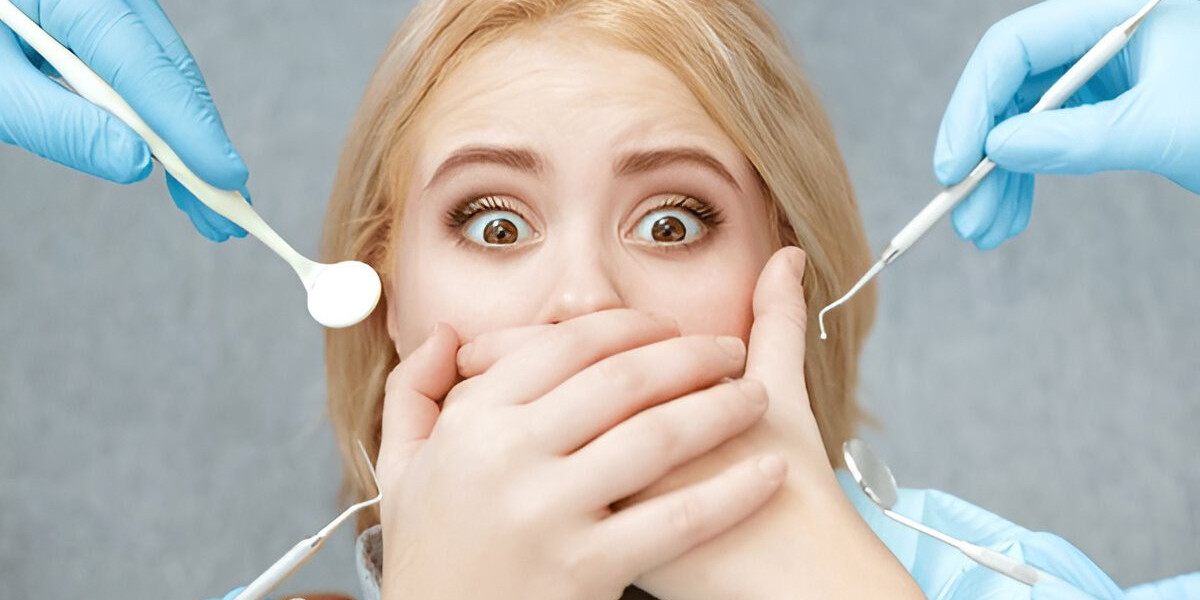A slightly crooked smile might seem like just a cosmetic issue. But when your bite is off—whether it’s an overbite, underbite, crossbite, or open bite—the effects go far beyond appearances.
Bad bites, or malocclusions, don’t always cause immediate discomfort. That’s why many people choose to “live with it.” However, untreated bite issues can lead to serious, long-term oral health complications, jaw dysfunction, and even problems that affect your entire body.
In this blog, we’ll dive deep into what really happens when a bad bite is left untreated—and why addressing it early can save you pain, money, and long-term health concerns.
What Is a Bad Bite?
A “bad bite” occurs when your upper and lower teeth don’t align properly when your mouth is closed. This misalignment, known as malocclusion, affects how you chew, speak, breathe, and smile. Common types include:
Overbite – Upper front teeth extend too far over the lower teeth
Underbite – Lower teeth extend past the upper teeth
Crossbite – Some upper teeth sit inside the lower teeth
Open bite – Front teeth don’t touch when the back teeth are closed
Many people have more than one type of malocclusion. Severity can range from subtle to severe.
Short-Term Signs: Subtle Yet Impactful
Initially, a bad bite may cause little to no pain. You might notice:
Mild jaw tension or fatigue
Slight difficulty chewing certain foods
Speech changes or lisps
Teeth that don’t come together evenly
At this stage, the symptoms may not seem urgent. But beneath the surface, your bite may already be putting strain on your teeth, jaw muscles, and joints.
Long-Term Consequences of Ignoring a Bad Bite
1. Excessive Tooth Wear and Damage
Misaligned teeth often grind or press against each other in unnatural ways. This leads to:
Worn or flattened enamel
Chipped or cracked teeth
Increased tooth sensitivity
Heightened risk of cavities and fractures
Over time, untreated malocclusions can require fillings, crowns, root canals—or even tooth replacement.
2. TMJ Dysfunction and Jaw Pain
The temporomandibular joints (TMJs) play a critical role in jaw movement. Bite imbalances strain these joints and the muscles around them, resulting in:
Jaw pain or tightness
Clicking, popping, or locking of the jaw
Difficulty opening or closing the mouth
Migraines or tension headaches
TMJ disorders can be chronic and disruptive, making basic activities like eating and talking uncomfortable.
3. Gum Disease and Bone Loss
When bite pressure is uneven, some teeth bear more force than others. This can lead to:
Gum recession
Bone deterioration
Tooth mobility or premature tooth loss
Proper bite alignment ensures that pressure is evenly distributed, preserving the health of the gums and bone structure.
4. Speech and Pronunciation Problems
A bad bite can affect tongue placement and airflow, interfering with speech. You might experience:
Difficulty pronouncing “s,” “t,” “sh,” or “th” sounds
A lisp or slurred words
Self-consciousness during conversations
These challenges can affect both children and adults, and may worsen over time without treatment.
5. Digestive Complications
Chewing is the first step in digestion. A misaligned bite can make it harder to chew food properly, leading to:
Swallowed chunks of food
Indigestion and bloating
Poor nutrient absorption
When food isn’t properly broken down, it stresses the entire digestive system.
6. Facial Aesthetics and Emotional Impact
A bad bite may change the shape of your face and smile, impacting self-esteem. For many, the emotional effects include:
Insecurity about appearance
Avoidance of photos or smiling
Anxiety in social settings
Treating bite issues often results in a more balanced facial structure and a significant confidence boost.
When to See an Orthodontist
The best time to evaluate a bite problem is during early childhood—before permanent teeth have fully erupted. However, it’s never too late. Adults can still benefit from orthodontic treatment to improve function and aesthetics.
Common signs you should get checked include:
Teeth that don’t come together correctly
Pain when chewing
Jaw clicking or popping
Frequent headaches or jaw fatigue
Uneven wear on teeth
How Orthodontic Treatment Helps
Orthodontists use a range of treatments to correct bite issues, customized for your age, severity, and lifestyle:
Braces (metal, ceramic, or lingual): Reliable for all bite types, including severe cases
Clear aligners (like Invisalign): Aesthetic, removable, and great for mild-to-moderate correction
Bite-correcting appliances: Such as elastics or functional appliances that reposition the jaw
Palatal expanders: Widen the upper jaw in children to create proper spacing
Jaw surgery (orthognathic surgery): Reserved for severe skeletal misalignments in adults
With advanced tools like 3D imaging and digital planning, your orthodontist can develop a targeted strategy that addresses both function and facial balance.
Final Thoughts
Ignoring a bad bite may feel like no big deal—until the long-term consequences catch up. From tooth damage and jaw pain to digestive issues and confidence struggles, untreated malocclusion can have far-reaching effects.
The good news? Most bite problems are treatable, and early intervention leads to the best outcomes. Don’t wait for pain or complications to arise—take action and protect your smile, health, and quality of life.
Is your bite silently causing damage? Book a consultation with Infinite Orthodontics today and let’s explore your options for a healthier, more functional smile.
Medical Disclaimer
This blog is intended for informational purposes only and does not constitute medical advice, diagnosis, or treatment. Always seek the advice of a licensed dental or medical professional with any questions you may have regarding a dental or orthodontic condition.
FAQs
1. Can a bad bite fix itself over time?
No. In fact, bite problems usually worsen without treatment. As you grow, or as your teeth and jaw shift with age, an untreated bite can lead to more severe misalignment and long-term complications.
2. Is jaw pain always related to a bad bite?
Not always, but it's a common sign. If you experience regular jaw pain, especially when chewing or speaking, it could be linked to malocclusion or TMJ issues. An orthodontic evaluation can help pinpoint the cause.
3. Can bite problems lead to tooth loss?
Yes. An uneven bite can put excessive pressure on certain teeth, causing gum recession, bone loss, and eventually tooth mobility or loss if left unaddressed.
4. Are clear aligners effective for fixing bad bites?
Yes, for mild to moderate bite issues. Clear aligners like Invisalign can correct certain types of malocclusions, but more severe cases may require braces or a combination of orthodontic treatments.
5. At what age should bite issues be treated?
The earlier, the better. The American Association of Orthodontists recommends a first orthodontic screening by age 7. However, adults can still achieve excellent results with the right treatment plan.







